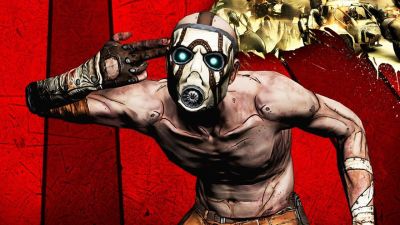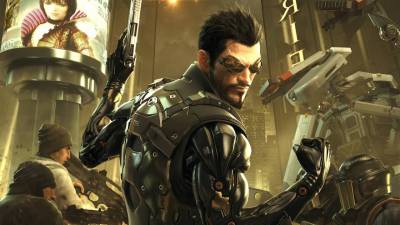Welcome back! We’ve had a long weekend of StarCraft with the Homestory Cup, but don’t worry - there was a lot of other stuff going on around the internet, and I managed to pick up a few things off the cutting room floor. This week, The New Yorker covered StarCraft, Half Life 2 is a decade old, and G4 is officially shutting down a year after the network pulled the funding plug. A sad time for all.
Heres to another good week.
Well, That Was Interesting
Good Game: The Rise of the Professional Cyber Athlete
There has been a mainstream push for eSports this year and nowhere is that more evident than in the past two weeks where we saw two major StarCraft 2 tournaments - Blizzcon 2014 and Homestory Cup 2014. Both represent two different styles of presentation for eSports and both show their potential as mainstream media has started to pick up on their popularity. ESPN famously gave limited coverage to DotA 2’s International 2014 on their broadcasting networks and online outlets, and has had a presence at both tournaments, despite the fact that their message hasn’t always been consistent on eSports.
However, you know you’ve become a cultural force when The New Yorker devotes a ten thousand word piece on the front page of their website. Granted, they’re playing into their digital readership audience; but it’s still presented in their high standard and filled with several great interviews covering the phenomenon. I’m personally an avid fan of eSports, with a focus on Dota 2 and StarCraft that started when a college buddy of mine perked my interested in an activity called BarCraft - where fans congregate at a bar on Sundays to watch the culmination of a StarCraft tournament.
Since then I’ve followed the rise of eSports and I preach their entertainment value to all who will listen. Understandably there’s a barrier to entry, with different games having their own unique and complex rules and styles, but when you get down to it American Football is not exactly simple to explain either. Even the average fan who watches their home team every Sunday does not fully understand the X’s and Y’s of every play, but they have a baseline understand that is enough. In what was a brilliant move, Valve this year had an answer to new viewers of their DotA 2 International with something they called a “Newbie Stream”, which had casters specifically picked to over-explain the ins and outs of DotA and the players.
Much like in regular sports, the casters and announcers are part of the attraction to watching the events. For my money I would rather have eSports casters covering every sport. In America especially, we have a sports culture that wants our announcers to be as unbiased as possible and present the game with an even focus on both teams. This has an unexpected side effect of causing most of them to be boring and bland as they clamor to not sound overly attached to any one team. This isn’t the case in eSports: the announcers grew up as players and fans, but they don’t always want one side to win - they want both to win. You can hear their excitement and joy at the amazing plays from the players, creating a passion level that I find lacking in more traditional sports settings.
Ben McGrath’s piece on StarCraft, Scarlet, and the rise of eSports is a lengthy read as per usual with The New Yorker, but it’s well worth your time, so make yourself a large coffee (or pour yourself a beer), and dig in. McGrath’s piece is a story - the story of gaming over the last 10 years and the rise of a new form of competition, one that is a bit like tennis: easy to pick up, but very few will ever master.
Half Life 2: 10 Years On
With Halo enjoying a remastered re-release of its entire history, it’s often easily forgotten that there’s another game from ten years ago that needs a bit of modern fanfare. That is of course Half Life 2, with its cliffhanger ending and enigmatic mastermind Gabe Newell, who still taunts and teases fans at a potential sequel. However, Valve has transitioned into their current roster of online multiplayer based games Dota 2 and Team Fortress 2, and Half Life slowly drifts out of the internet’s collective memory and into history.
Personally, I always found the Half Life series to be more influential than Halo and even Goldeneye, both of which enjoy a nostalgic seat at the table because of their widespread accessibility because of their presence on consoles. I have always felt that Quake (1997) was superior to Goldeneye (1997) and Half Life (1999) superior to Halo (2001), but I understand their importance because they were on consoles. The comparisons between Goldeneye and Quake are easy to make, single player games that are largely remembered because of their multiplayer modes with gun swivel.
Understandably, Half Life and Halo are two different games with the former being a corridor shooter and the latter have more open spaces and a large sense of scope. However, both are rather linear with the only way being forward and there is no going back. Halo went for tightly tuned controls and fast combat, shooting down the waves of enemies felt good. Where Half Life took more of an environmental approach where the location was as much of a character as any one person. Both games have created two differing branches of first-person shooters, with one influencing the likes of Call of Duty and Gears of War and the other giving inspiration to BioShock and Dead Space.
There’s nothing wrong with either house, only we must not forget that there are two houses, and Halo’s house still stands strong with a 5th instalment on the way. We may never see the conclusion to the Half Life franchise, but it’s influence is ever reaching and it is ok if we never go back to the Combine universe.
G4 is going off the air for good
Well it’s official: IGN has reported that NBCUniversal will officially pull the plug on G4 at the end of this month.
G4 was the television home for games and was going strong for almost a decade with shows like Attack of the Show and XPlay, both of which catered to the rising geek culture of the last decade. Unfortunately they are were the victims of their own audience, and audience that is part of the on demand culture that has given rise to YouTube, Netflix, and Spotify. But for a few years there they gave us personalities like Kevin Pereira, Olivia Munn, Adam Sessler, Chris Hardwick, and Morgan Webb to name a few.
In one sense, G4 represents the early signs of corporations resisting or ignoring viewership trending towards the internet, and the way media is currently constructed online it might not have mattered anyway. There isn’t enough revenue to go around for internet-based entertainment as it currently stands. Most of your favorite internet shows barely bring in enough money to keep the lights on, and that’s a problem tied into the Net Neutrality issue. Entertainment Corporations want to make money from their online properties that everyone enjoys, but traditional advertising revenue models are failing as people find free outlets or loopholes. Look at the drama over the Taylor Swift vs Spotify issue, while it is true Taylor Swift isn’t hurting all that much by the loss of revenue because of Spotify - the fact still remains that lesser known artist make very little from Spotify and they are hurting.
But I digress, it is sad to see the end of an era that I remember so fondly. Every night for years I would watch Attack of the Show at seven and then XPlay at eight, but now I don’t even have a cable subscription to watch the final days of a network that I used to be so fond of. I specifically got a GameCube to play Resident Evil 4 because of XPlay’s coverage of that game, and as this was before the internet was “the place to be” I might have missed it. Facebook was in its infancy, Reddit didn’t exist, and there was no Twitter - there was TV as the outlet for quick game news outside of a magazine.
G4, you will be missed.
Visual Stimulation
An Evening with Sid Meier and Jake Solomon of Firaxis Games
Prismata Trailer
FAR CRY 4 Finished in Under 15 Minutes (yes, really)
History of Wooing Men
Extra Study Material
Sweden’s Sexism Test for Games is a Great Idea



